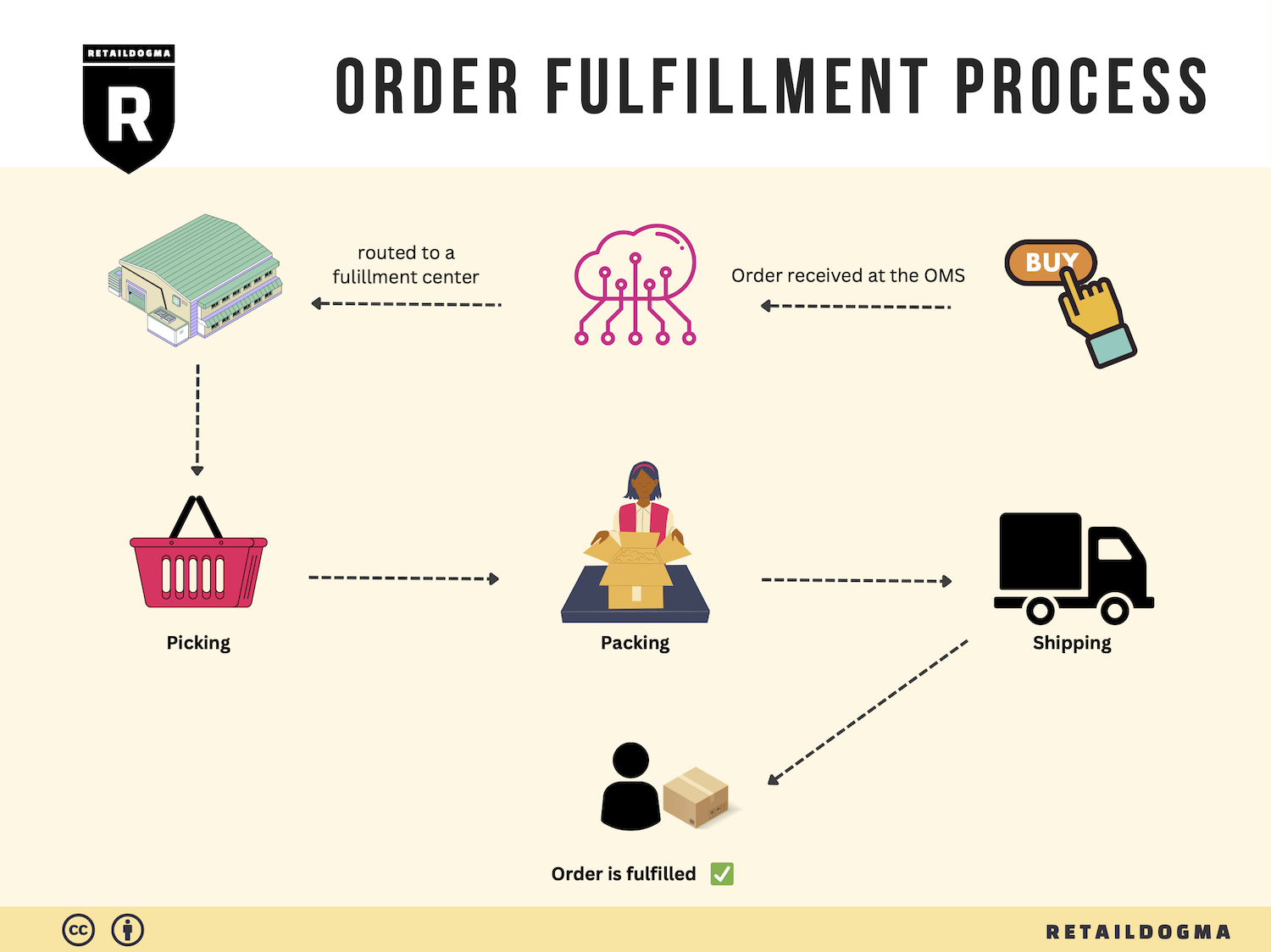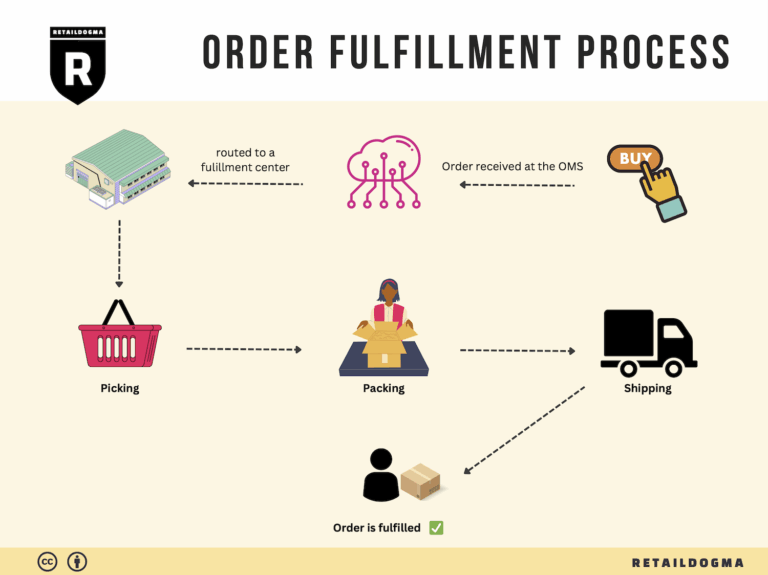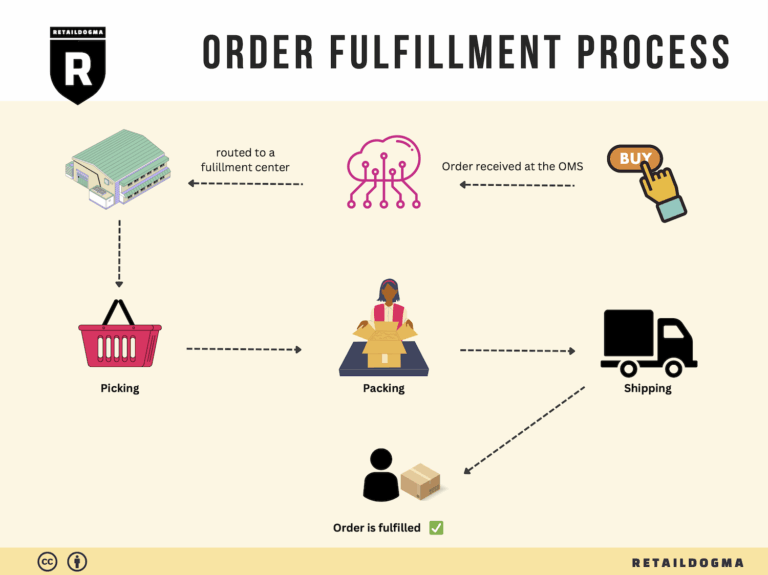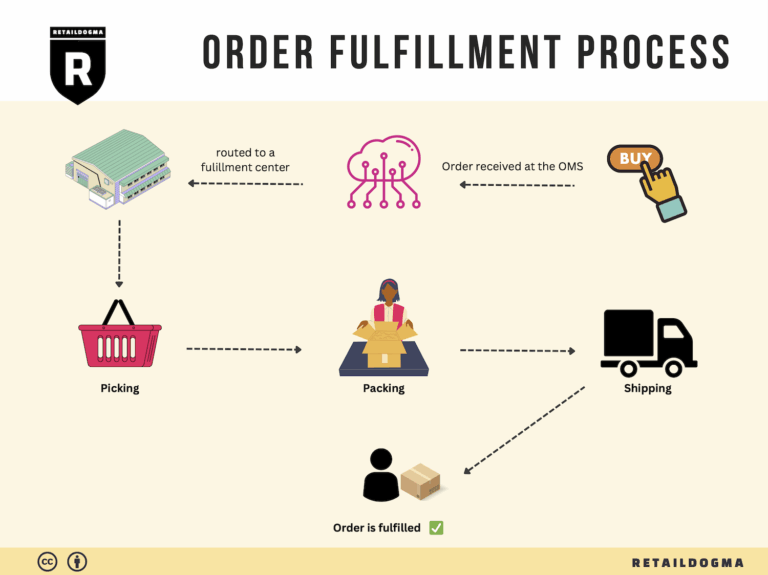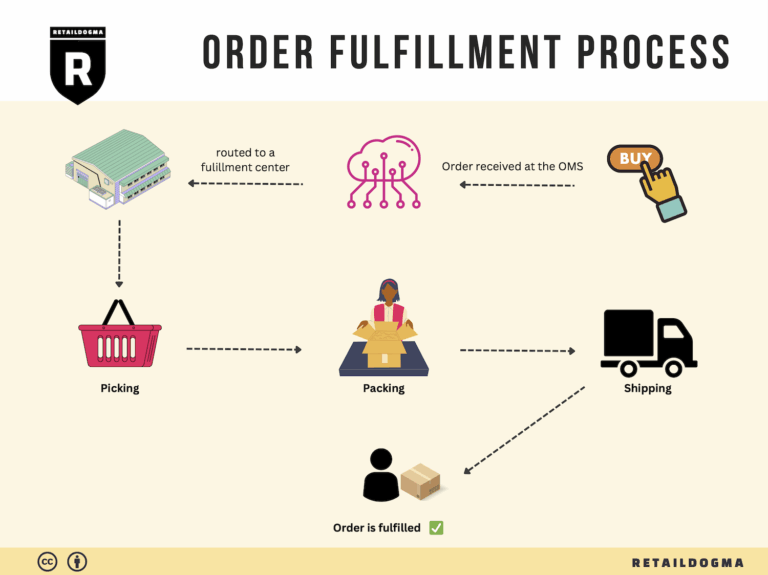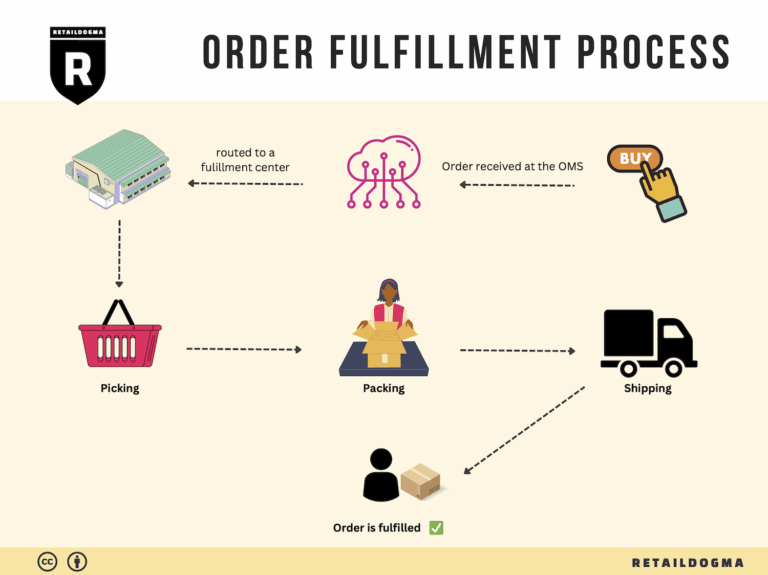How Order Fulfillment Works: A Step-by-Step Guide for Businesses
What is E-commerce Fulfillment? An Introduction for Growing Businesses
Understanding E-commerce Fulfillment
For many growing online businesses, the excitement of acquiring new customers often leads to an overwhelming challenge: managing the logistics of packing and shipping orders. As sales increase, so does the complexity of ensuring that products reach customers promptly and in excellent condition. This is where e-commerce fulfillment comes into play, serving as a crucial component of your business operations.
At its core, e-commerce fulfillment is the process of getting a product from your inventory to the customer’s doorstep. This involves a series of steps, including order processing, picking and packing, shipping, and handling returns. As a business owner or operations manager, understanding this process can help you streamline operations, improve customer satisfaction, and ultimately drive growth.
In this guide, we will explore various fulfillment models available to e-commerce businesses, including Third-Party Logistics (3PL) providers and Fulfillment by Amazon (FBA). Each model offers unique advantages and can significantly impact your operational efficiency. We will delve into the core services offered by fulfillment partners, such as inventory management, order tracking, and customer service support, which are essential for maintaining a smooth workflow.
Choosing the right fulfillment partner is critical for your business’s success. Factors such as location, product range, shipping capabilities, and technology integration play a vital role in this decision. We will provide practical advice on how to evaluate potential partners based on these criteria, ensuring you make an informed choice that aligns with your business goals.
Pricing is another essential aspect of e-commerce fulfillment that can affect your bottom line. Understanding the cost structures of different fulfillment services will enable you to budget effectively and identify the most cost-efficient solutions for your business. We’ll break down common pricing models and help you navigate the complexities of fulfillment costs.
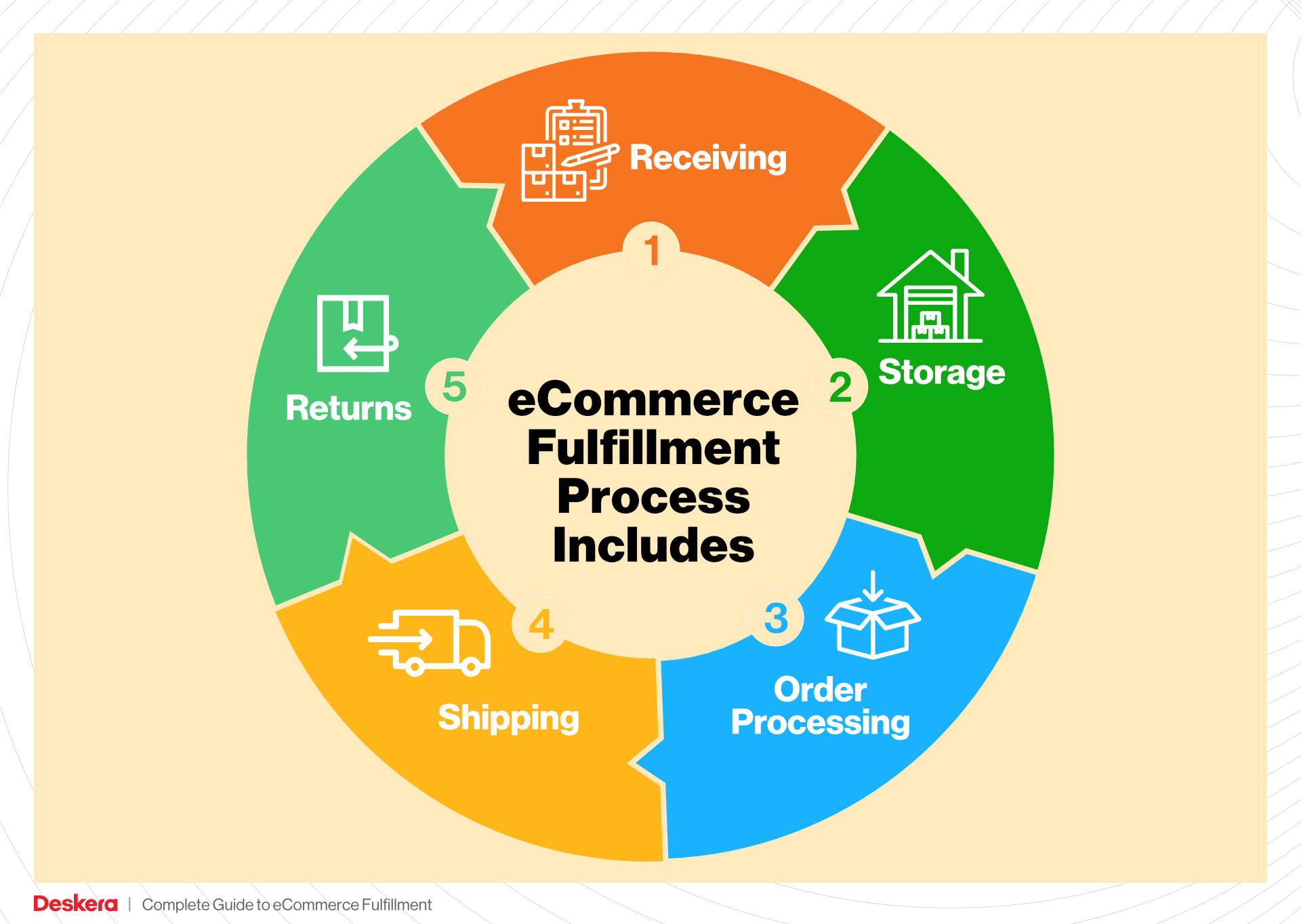
The ultimate goal of this guide is to empower your business to make smart, strategic decisions about logistics. By understanding the ins and outs of e-commerce fulfillment, you can alleviate the burden of packing and shipping, allowing you to focus on what you do best: growing your brand and serving your customers.
What You’ll Learn In This Guide
- What is E-commerce Fulfillment? An Introduction for Growing Businesses
- The Order Fulfillment Process: From ‘Buy’ Button to Customer’s Door
- Comparing Fulfillment Models: In-House vs. 3PL vs. Dropshipping
- A Deep Dive into Amazon FBA: Pros, Cons, and Who It’s For
- Core Services Offered by Fulfillment Centers
- How to Choose a Fulfillment Partner: A 6-Point Checklist
- Understanding Fulfillment Pricing: A Breakdown of Common Fees
- Frequently Asked Questions (FAQs) about Fulfillment
- Conclusion: Is Outsourcing Fulfillment the Right Move for Your Business?
- Important Disclaimer
The Order Fulfillment Process: From ‘Buy’ Button to Customer’s Door
1. Receiving Inventory
The order fulfillment process begins with receiving inventory, a critical first step that sets the foundation for efficient operations. Upon arrival, products are checked against purchase orders to ensure accuracy in quantity and quality. This step often involves assigning a Stock Keeping Unit (SKU) to each item, which facilitates tracking and inventory management.
Why is this important? Accurate receiving minimizes discrepancies that can lead to stockouts or overstock situations, both of which can negatively impact customer satisfaction and cash flow. Moreover, maintaining a systematic approach to receiving allows businesses to streamline future steps in the fulfillment process.
2. Warehouse Storage
Once inventory has been received and verified, the next step is warehouse storage. Products are strategically placed within a warehouse, often organized by categories or sales velocity. Efficient storage solutions, such as shelving and bins, are utilized to maximize space and accessibility.
This stage is crucial for maintaining inventory accuracy and optimizing picking efficiency. Properly organized storage helps in minimizing the time it takes to locate items during the order picking process. Companies often use inventory management software to track stock levels in real-time, ensuring that they can quickly respond to demand fluctuations.
3. Order Picking
When a customer places an order, the next step is order picking, where items are selected from storage based on the order details. A pick list—an organized document or digital record detailing the items needed for each order—guides the warehouse staff in this process.
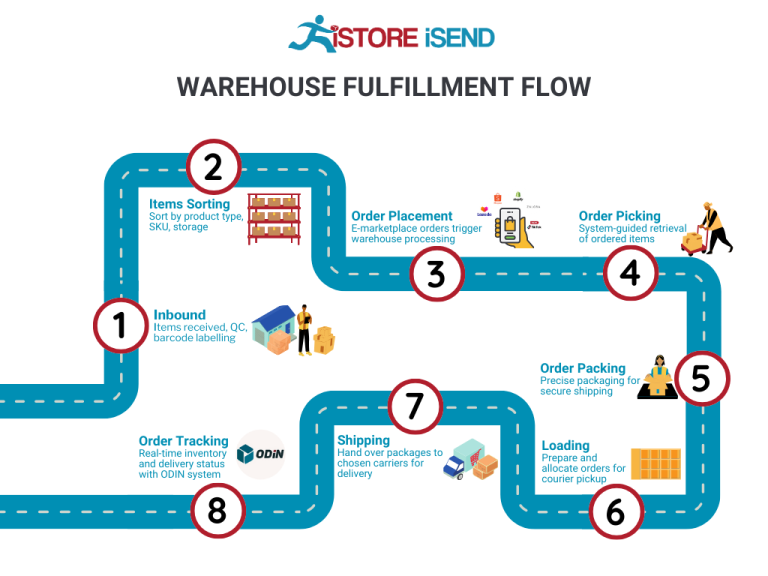
The significance of order picking cannot be overstated; it directly affects fulfillment speed and accuracy. Efficient picking strategies, such as batch picking or zone picking, can reduce the time taken to gather items, thus accelerating the overall fulfillment timeline. This is especially important for e-commerce businesses that thrive on fast delivery to enhance customer satisfaction.
4. Order Packing
After items have been picked, they move to the order packing stage. Here, products are carefully packed into boxes or envelopes, ensuring they are secure for transit. This step often involves adding packing slips, promotional materials, or branded packaging to enhance the customer experience.
The packing process is vital for reducing returns due to damage and ensuring that customers receive their orders in pristine condition. Additionally, the use of appropriate packing materials can minimize shipping costs, making this step not only about aesthetics but also about cost efficiency. Companies may employ packing software to optimize packaging sizes and reduce waste.
5. Shipping & Delivery
The final step in the fulfillment process is shipping and delivery. Once orders are packed, they are handed over to shipping carriers for distribution. Businesses must choose reliable carriers that align with their delivery timelines and budget, as the choice of carrier can significantly impact customer satisfaction.
This stage is critical because it determines how quickly customers receive their orders. Effective shipping strategies, including offering multiple shipping options and tracking capabilities, can enhance the customer experience and build loyalty. Furthermore, businesses should monitor shipping performance metrics, such as delivery times and carrier reliability, to ensure continuous improvement in their fulfillment processes.
Conclusion
Understanding the order fulfillment process—from receiving inventory to shipping and delivery—is essential for e-commerce businesses aiming to scale efficiently. By optimizing each step, businesses can enhance operational efficiency, reduce costs, and ultimately improve customer satisfaction. Implementing best practices in each of these areas will position your business for sustainable growth in a competitive landscape.
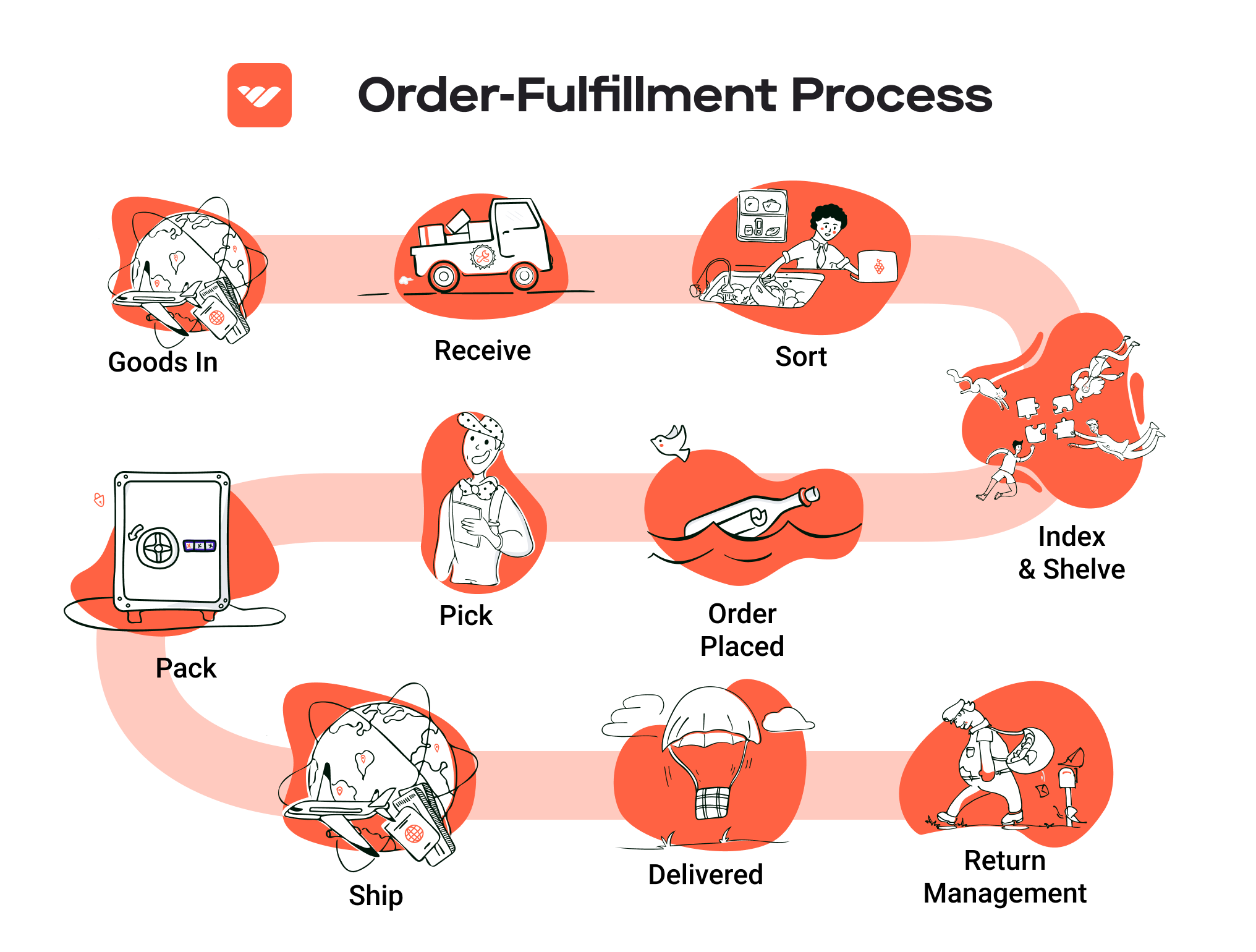
Comparing Fulfillment Models: In-House vs. 3PL vs. Dropshipping
Comparison of Fulfillment Models
| Model | Who Handles Inventory | Best For (Business Stage) | Key Advantage | Key Disadvantage |
|---|---|---|---|---|
| In-House Fulfillment | The e-commerce business itself | Established businesses | Full control over inventory and fulfillment | High overhead costs and resource requirements |
| Third-Party Logistics (3PL) | A third-party provider | Growing businesses | Scalability and cost-effectiveness | Less control over inventory and fulfillment speed |
| Dropshipping | Supplier or dropshipping partner | Startups and niche businesses | Low upfront investment and risk | Lower profit margins and less brand control |
In-House Fulfillment
In-house fulfillment involves managing the entire logistics process within your own organization. This model is typically favored by established businesses that have the resources and infrastructure to handle inventory management, warehousing, packing, and shipping. The main advantage of in-house fulfillment is the complete control it offers over the entire process, allowing businesses to ensure product quality and manage shipping times effectively. Businesses can customize the packaging, branding, and customer experience, which can enhance brand loyalty. However, this model comes with significant disadvantages, primarily high overhead costs associated with warehousing, staffing, and equipment. It also requires a substantial investment of time and resources to manage operations, which can be a burden for smaller businesses or those looking to scale quickly.
Third-Party Logistics (3PL)
Third-party logistics (3PL) providers offer a flexible and scalable alternative to in-house fulfillment. In this model, businesses outsource their logistics operations to specialized providers who handle inventory storage, order fulfillment, and shipping. This is particularly beneficial for growing businesses that need to expand their operations without the burden of managing logistics themselves. The key advantage of using a 3PL is the ability to scale operations quickly; businesses can adjust their logistics needs based on demand fluctuations without significant capital investment. Additionally, many 3PLs offer advanced technology for inventory management and tracking, which can streamline operations. However, a downside is the reduced control over inventory and fulfillment processes. Businesses might face challenges in ensuring quality and speed, especially if their 3PL partner does not meet service level agreements.
Dropshipping
Dropshipping is a fulfillment model where the e-commerce business does not hold inventory but instead relies on suppliers to ship products directly to customers. This model is particularly appealing to startups and niche businesses due to its low upfront investment and minimal risk. Since there is no need to purchase inventory upfront, businesses can test various products and market demands without significant financial commitment. The key advantage of dropshipping is the flexibility it offers; entrepreneurs can easily pivot their product offerings based on market trends. However, this model comes with notable disadvantages, including lower profit margins due to reliance on suppliers and reduced control over product quality and shipping times. Additionally, businesses may struggle with brand identity since products may not be customizable, and customer service can be complicated if issues arise with the supplier’s fulfillment.
Conclusion
Choosing the right fulfillment model is crucial for the success of any e-commerce business. Each model—In-House Fulfillment, Third-Party Logistics, and Dropshipping—offers unique advantages and challenges that can impact growth and operational efficiency. Established businesses might lean towards in-house fulfillment to maintain control and quality, while growing businesses may find 3PLs to be a more cost-effective and scalable solution. Startups and niche markets often benefit from dropshipping due to its low barriers to entry. Ultimately, the decision should align with your business goals, financial capacity, and growth strategy, ensuring you select a model that supports your long-term vision.
A Deep Dive into Amazon FBA: Pros, Cons, and Who It’s For
Understanding Fulfillment by Amazon (FBA)
Fulfillment by Amazon (FBA) is a service that allows e-commerce sellers to store their products in Amazon’s fulfillment centers. Amazon then takes care of storage, packaging, shipping, and customer service on behalf of the seller. This service enables businesses to leverage Amazon’s vast logistics network, offering a seamless shopping experience for customers while allowing sellers to focus on growing their brand.
How FBA Works
-
Setup: Sellers create an Amazon Seller account and list their products. They can choose to enroll in the FBA program during the setup process.
-
Inventory Management: Once enrolled, sellers send their products to Amazon’s warehouses. They must adhere to Amazon’s packaging and labeling guidelines to ensure smooth processing.
-
Storage: Products are stored in Amazon’s fulfillment centers, where they are available for purchase by millions of Amazon customers.
-
Order Fulfillment: When a customer places an order, Amazon picks, packs, and ships the product directly to the customer. This includes providing tracking information and handling returns.
-
Customer Service: Amazon manages all customer service inquiries related to FBA orders, including returns and refunds, allowing sellers to focus on other business aspects.
-
Payment: Sellers receive payments for their sales, minus Amazon’s fees, which cover storage, fulfillment, and other services.
Pros of Using FBA
1. Prime Eligibility
One of the most significant advantages of FBA is that it automatically qualifies products for Amazon Prime. Prime members enjoy free two-day shipping, making your products more attractive to a large customer base. This can lead to increased sales and visibility, as Prime products often rank higher in search results.
2. Customer Trust
When customers see the “Fulfilled by Amazon” badge, it instills a sense of trust. Amazon is known for its customer service and reliable shipping, which can enhance your brand’s credibility. Customers are more likely to purchase from sellers who use FBA due to the assurance of quick delivery and hassle-free returns.
3. Multi-Channel Fulfillment
FBA isn’t limited to Amazon sales. Sellers can utilize FBA to fulfill orders from other sales channels, such as their own websites or other online marketplaces. This multi-channel fulfillment capability allows for streamlined logistics, as sellers can manage their inventory and shipping from a single platform.
4. Time-Saving
FBA handles the entire fulfillment process, allowing sellers to focus on marketing, product development, and customer engagement instead of managing logistics. This can lead to more effective time management and growth opportunities for the business.
5. Scalability
FBA allows businesses to scale without the need for significant investments in warehouse space, personnel, or logistics management. As your sales grow, Amazon can accommodate increased inventory and order volumes, making it easier to expand your business.
Cons of Using FBA
1. High Fees
While FBA offers numerous advantages, it comes with associated costs. Sellers must pay for storage space and fulfillment services, which can accumulate, especially for low-margin products. Understanding the fee structure is crucial to ensure that your profit margins remain viable.
2. Strict Inventory Rules
Amazon has stringent policies regarding inventory management, including limitations on storage limits and requirements for product condition. Sellers need to be diligent in monitoring their inventory levels and ensuring compliance with Amazon’s policies to avoid penalties or account suspensions.
3. Commingling Risks
When using FBA, products may be commingled with other sellers’ inventory. This means that if a customer returns a product, it could potentially be mixed with inventory from other sellers. This could lead to quality control issues, as you might receive returns that do not belong to your brand. To mitigate this risk, sellers can opt for sticker labeling, but this may incur additional costs.
4. Loss of Control
Using FBA means ceding some control over the fulfillment process to Amazon. While this can be beneficial for many sellers, it may not suit businesses that prefer to manage their logistics and customer interactions directly.
5. Competition
With millions of sellers on Amazon, competition is fierce. While FBA can enhance your product visibility, it also means that your competitors are likely using the same service. Differentiating your brand and products becomes critical in a crowded marketplace.
Who is FBA Best For?
FBA is particularly well-suited for small to medium-sized e-commerce businesses looking to scale rapidly without investing heavily in logistics infrastructure. It is an excellent choice for sellers who:
- Have a diverse product catalog and want to leverage Amazon’s customer base.
- Seek to save time on order fulfillment and customer service.
- Are willing to pay for the convenience of FBA and can absorb the associated fees within their pricing strategy.
- Want to take advantage of Prime eligibility to boost sales.
However, FBA may not be the best option for businesses with low-margin products, those that prefer a hands-on approach to fulfillment, or sellers who wish to maintain strict control over their inventory and customer interactions. Each business should evaluate its unique needs and goals before deciding to enroll in FBA.
Core Services Offered by Fulfillment Centers
Inventory Management & Warehousing
Inventory management and warehousing are foundational services offered by fulfillment centers that play a critical role in the operational efficiency of e-commerce businesses. This service involves the systematic oversight of stock levels, storage conditions, and product availability, ensuring that businesses have the right products on hand to meet customer demand without overstocking.
Benefits:
1. Optimized Stock Levels: Fulfillment centers utilize sophisticated inventory management systems that track stock in real-time. This minimizes the risk of stockouts, which can lead to lost sales, as well as overstock situations that tie up capital.
-
Centralized Storage: By consolidating inventory in a dedicated fulfillment center, businesses can reduce the complexities and costs associated with managing multiple storage locations. This centralization also facilitates easier access to products for faster order fulfillment.
-
Scalability: As e-commerce businesses grow, their inventory needs will inevitably change. Fulfillment centers can easily scale up or down based on seasonal demand fluctuations, ensuring that businesses can adapt without incurring significant overhead costs.
-
Data-Driven Insights: Advanced inventory management systems provide valuable analytics that help businesses make informed decisions regarding purchasing, sales trends, and product performance. This data-driven approach enables companies to optimize their supply chain and improve overall profitability.
Pick and Pack Services
Pick and pack services are an essential aspect of the fulfillment process. This service involves selecting (picking) the ordered items from the warehouse and then packaging (packing) them for shipment to customers. This seemingly simple process is crucial for ensuring that orders are accurate and delivered promptly.
Benefits:
1. Efficiency and Speed: Fulfillment centers employ specialized staff and technology to efficiently pick and pack orders, significantly reducing the time from order placement to delivery. This speed is vital in maintaining customer satisfaction, especially in the era of same-day and next-day shipping.
-
Accuracy: Advanced systems help reduce human error during the picking process. Barcodes and scanning technology ensure that the correct items are selected, which minimizes returns and enhances customer trust.
-
Custom Packaging Options: Many fulfillment centers offer customization of packaging materials, allowing businesses to create a unique unboxing experience that reflects their brand identity. This can include branded boxes, special inserts, and eco-friendly packaging options.
-
Order Flexibility: Whether it’s single-item orders or bulk shipments, fulfillment centers can handle a wide range of order types. This flexibility allows e-commerce businesses to cater to diverse customer needs without needing to invest in extensive in-house logistics capabilities.
Kitting and Assembly
Kitting and assembly services involve grouping individual items into ready-to-sell packages or kits. This service is particularly beneficial for businesses that offer product bundles, promotional sets, or customized orders that require multiple components to be assembled before shipping.
Benefits:
1. Enhanced Product Offerings: By providing kitting services, fulfillment centers enable e-commerce businesses to offer bundled products that can increase average order value. This strategy can also enhance customer satisfaction by providing a more comprehensive product experience.
-
Streamlined Operations: Outsourcing kitting and assembly to fulfillment centers allows businesses to focus on their core operations, such as marketing and sales, rather than the logistical challenges of assembling products. This can lead to improved operational efficiency.
-
Cost-Effectiveness: Fulfillment centers often have the resources and expertise to assemble kits more efficiently than individual businesses can achieve in-house. This can lead to cost savings, particularly for small to medium-sized enterprises that may lack the infrastructure for large-scale assembly.
-
Quality Control: Many fulfillment centers implement strict quality control measures during the kitting process. This ensures that all assembled products meet the required standards before they are shipped, thereby reducing the likelihood of customer complaints and returns.
Returns Management (Reverse Logistics)
Returns management, or reverse logistics, is a critical service that fulfillment centers provide to help e-commerce businesses efficiently handle product returns. This service encompasses the entire process from receiving returned items to restocking them or disposing of them appropriately.
Benefits:
1. Improved Customer Experience: A streamlined returns process enhances customer satisfaction and builds trust. Fulfillment centers can manage returns efficiently, providing customers with timely updates and support during the return process.
-
Cost Savings: By handling returns in-house, fulfillment centers can help businesses minimize the costs associated with returns processing. This includes efficient restocking, refurbishing damaged items, and managing inventory levels effectively.
-
Data Analysis: Returns management services often include analytics that help businesses understand return reasons and trends. This data can inform product development, marketing strategies, and customer service improvements, ultimately leading to reduced return rates.
-
Sustainability Initiatives: Many fulfillment centers are now focusing on sustainable practices in their returns management processes. This includes environmentally friendly disposal methods and recycling initiatives, which can align with consumers’ increasing demand for corporate social responsibility.
By leveraging these core services, e-commerce businesses can enhance their operational efficiency, improve customer satisfaction, and ultimately scale their sales and logistics processes effectively.
How to Choose a Fulfillment Partner: A 6-Point Checklist
Location & Warehouse Network
The geographic location of your fulfillment partner and their warehouse network play crucial roles in ensuring timely delivery and cost efficiency. Consider how close their warehouses are to your primary customer base, as this can significantly impact shipping times and costs.
Key Questions to Ask:
– Where are your fulfillment centers located, and how do they align with my target market?
– Do you have a network of warehouses that can facilitate faster shipping options like same-day or next-day delivery?
– How do you handle international shipping, and what are the customs processes involved?
Why It’s Important: A strategically located fulfillment partner can reduce shipping times and costs, enhancing customer satisfaction. Additionally, having multiple warehouses can help mitigate risks associated with delays caused by natural disasters or regional disruptions.
Technology & Integrations
In today’s e-commerce landscape, a robust technological backbone is essential. Your fulfillment partner should offer seamless integrations with your existing e-commerce platforms, inventory management systems, and customer relationship management tools.
Key Questions to Ask:
– What platforms do you integrate with, and how seamless is the integration process?
– Can I track orders in real-time, and what reporting capabilities do you provide?
– How do you manage inventory levels, and can I receive alerts for low stock?
Why It’s Important: Efficient technology and integrations streamline operations, reduce manual errors, and provide valuable insights into your fulfillment processes. Real-time tracking and reporting allow you to maintain transparency with your customers, enhancing their overall experience.
Specializations (e.g., Cold Storage, Oversized Items)
Not all fulfillment centers are equipped to handle every type of product. If your business deals in specialized items, such as perishables or oversized products, ensure that your fulfillment partner can accommodate those needs.
Key Questions to Ask:
– What types of products are you specialized in handling?
– Do you have facilities for specific needs, such as cold storage or oversized item management?
– How do you ensure product quality during storage and shipping?
Why It’s Important: Choosing a partner that specializes in your type of product ensures that your items are handled correctly and maintain their quality. This is particularly critical for businesses dealing in food, beverages, or delicate items.
Scalability & Capacity
As your business grows, your fulfillment needs will evolve. A fulfillment partner should not only have the capacity to handle your current volume but also the ability to scale operations as your business expands.
Key Questions to Ask:
– What is your current capacity, and how quickly can you scale to meet increased demand?
– How do you manage peak seasons or unexpected spikes in order volume?
– Are there any limitations on the types of products or order volumes you can handle?
Why It’s Important: Partnering with a scalable fulfillment provider allows you to focus on growing your business without worrying about whether your logistics can keep up. They should have a proven track record of managing seasonal fluctuations effectively.
Pricing and Contracts
Understanding the pricing structure and contract terms is essential for maintaining profitability. Be clear on how fees are structured, including storage, pick and pack, shipping, and any additional services.
Key Questions to Ask:
– What is your pricing model, and are there any hidden fees I should be aware of?
– How are shipping costs calculated, and do you offer discounted rates for bulk shipments?
– What are the contract terms, and is there flexibility for renegotiation as my business evolves?
Why It’s Important: Transparent pricing helps you budget accurately and avoid unexpected costs that could impact your margins. A flexible contract can also provide you with the agility to adapt to changing business needs.
Customer Support & Reviews
Effective customer support is crucial for resolving issues quickly and maintaining a smooth operation. Additionally, reviews from other clients can provide insight into the reliability and quality of service.
Key Questions to Ask:
– What customer support options do you offer (e.g., phone, email, chat), and what are your hours of availability?
– Can you provide references or case studies from businesses similar to mine?
– How do you handle order errors or customer complaints?
Why It’s Important: Reliable customer support ensures that you can address issues as they arise, minimizing disruptions to your business. Positive reviews and testimonials can give you confidence in your partner’s ability to deliver quality service consistently.
Conclusion
Choosing the right fulfillment partner is a critical decision that can significantly influence your e-commerce success. By carefully considering these six key factors—location and warehouse network, technology and integrations, specializations, scalability and capacity, pricing and contracts, and customer support—you can make an informed choice that aligns with your business goals and helps you scale effectively. Remember to conduct thorough due diligence, ask the right questions, and take the time to understand how a potential partner will fit into your overall operations.
Understanding Fulfillment Pricing: A Breakdown of Common Fees
Initial Setup Fees
Initial setup fees are often the first costs incurred when partnering with a print fulfillment service. These fees typically cover the onboarding process, which may include account setup, integration with your e-commerce platform, and any necessary customizations to meet your business needs.
Most providers charge a flat fee for this service, which can range anywhere from $0 to several hundred dollars, depending on the complexity of your requirements. For example, if your business requires specific branding elements or a unique storefront integration, expect to pay more. Some services may waive this fee if you commit to a certain order volume or subscription plan, making it essential to negotiate terms based on your expected sales.
Receiving Fees
Receiving fees are charged when the fulfillment center accepts and processes your inventory. This fee usually covers the labor involved in unloading, inspecting, and storing the products.
Receiving fees can vary significantly based on the volume and type of products being received. Many fulfillment services charge a per-pallet or per-bin fee, typically in the range of $10 to $50 per pallet. Some companies may also charge additional fees for specialized handling or for receiving items that require extra care, such as fragile or high-value goods.
Storage Fees (per pallet/bin)
Storage fees are incurred for the duration that your products remain in the fulfillment center’s warehouse. These fees can be charged on a monthly basis, typically calculated per pallet or per bin.
Storage costs generally range from $10 to $30 per pallet per month. If your inventory is not moving quickly, these fees can add up and impact your bottom line. Some fulfillment services offer tiered pricing based on volume, allowing businesses with larger inventories to benefit from lower rates. It’s essential to monitor your stock levels and turnover rates to mitigate excessive storage costs.
Pick & Pack Fees (per item/order)
Pick and pack fees are charged for the labor involved in retrieving items from inventory and preparing them for shipment. This fee is usually calculated on a per-item basis, with additional charges for complex orders that require special packaging or multiple items.
Commonly, pick and pack fees range from $1 to $5 per item, depending on the fulfillment provider and the complexity of the order. For instance, if an order includes multiple items that need to be packed in a specific way, the fee may be higher. Some fulfillment centers also offer discounts for bulk orders, which can be beneficial for e-commerce businesses with high sales volumes.
Shipping Fees
Shipping fees are one of the most significant costs associated with fulfillment and can vary widely based on several factors, including the destination, weight, dimensions of the package, and the shipping method chosen.
Fulfillment providers typically offer a variety of shipping options, from standard to expedited, each with its own pricing structure. For example, standard shipping might cost anywhere from $5 to $15 for a small package, while expedited shipping can range from $20 to $50 or more, depending on the urgency. Many fulfillment services have partnerships with major carriers, allowing them to offer competitive shipping rates, which can be passed on to you as a business.
Tips for Getting an Accurate Quote
-
Understand Your Needs: Before requesting a quote, assess your inventory and shipping needs. Know the volume of products you will be sending and the expected order frequency. This information will help you receive a tailored quote.
-
Request Detailed Pricing: Ask for a breakdown of all fees, including initial setup, receiving, storage, pick & pack, and shipping. This transparency will help you understand the true cost of fulfillment.
-
Negotiate Terms: Don’t hesitate to negotiate terms with fulfillment providers. If you anticipate high order volumes, inquire about bulk discounts or waivers on certain fees.
-
Evaluate Multiple Providers: Compare quotes from several fulfillment services to find the best pricing model that suits your business needs. Look for hidden fees and ensure you understand all terms before making a decision.
-
Consider Long-Term Costs: While initial costs are important, consider the long-term costs associated with each provider. A lower initial fee may come with higher ongoing charges, so look for a partner that offers a sustainable pricing model.
By understanding these common fulfillment pricing models and following these tips, e-commerce business owners can make informed decisions that enhance their operational efficiency and profitability.
Frequently Asked Questions (FAQs) about Fulfillment
1. What are print fulfillment services?
Print fulfillment services are specialized logistics providers that handle the production, packing, and shipping of custom printed products, such as apparel, home goods, and accessories. These services allow e-commerce businesses to offer a wide range of customizable products without managing inventory or production facilities.
2. How do print fulfillment services work?
Print fulfillment services operate on a print-on-demand model. When a customer places an order on your e-commerce store, the fulfillment service receives the order, produces the item with your design, packages it, and ships it directly to the customer. This process eliminates the need for you to hold inventory, allowing for greater flexibility and reduced upfront costs.
3. What is the difference between a warehouse and a fulfillment center?
A warehouse is primarily used for storing products until they are needed, whereas a fulfillment center is designed specifically for order processing and shipping. Fulfillment centers not only store products but also manage the entire order fulfillment process, including picking, packing, and shipping, often with technology integration for real-time tracking and inventory management.
4. What is a 3PL?
A Third-Party Logistics (3PL) provider is a company that offers outsourced logistics services to businesses. This can include warehousing, fulfillment, and distribution. In the context of print fulfillment, a 3PL can manage the production and shipping of custom printed products, allowing e-commerce businesses to focus on sales and marketing.
5. How much do fulfillment services cost?
The cost of fulfillment services varies based on several factors, including the type of products, order volume, shipping destinations, and additional services like branding or packaging. Typically, costs include production fees, fulfillment fees (per order or per item), and shipping costs. It’s essential to evaluate different providers to find a solution that fits your budget and business needs.
6. What types of products can I sell using print fulfillment services?
You can sell a wide variety of products using print fulfillment services, including apparel (t-shirts, hoodies, hats), home decor items (posters, pillows, wall art), accessories (bags, phone cases), and more. Many providers offer customizable options, allowing you to create unique products that resonate with your target audience.
7. How long does it take to fulfill an order?
Order fulfillment times can vary based on the provider and the complexity of the order. Generally, print fulfillment services aim for a turnaround time of 2 to 7 business days for production, followed by shipping times that can range from a few days to several weeks, depending on the destination and shipping method selected.
8. Can I customize packaging for my orders?
Yes, many print fulfillment services offer customizable packaging options. This can include branded boxes, thank you notes, and other packaging elements that enhance the customer experience and reinforce your brand identity. Check with your chosen provider to see what options are available.
9. How do I integrate print fulfillment services with my online store?
Most print fulfillment providers offer easy integration with popular e-commerce platforms such as Shopify, WooCommerce, and Etsy. This typically involves connecting your store to the fulfillment service via an API or app, allowing for seamless order processing and real-time inventory management.
10. What should I consider when choosing a print fulfillment service?
When selecting a print fulfillment service, consider the following factors:
- Product Range: Ensure they offer the types of products you want to sell.
- Quality Assurance: Look for providers with high-quality printing and materials.
- Shipping Options: Check their shipping capabilities and delivery times.
- Pricing Structure: Understand their pricing model and any hidden fees.
- Customer Support: Evaluate the level of support offered, including response times and availability.
- Reviews and Reputation: Research customer reviews to gauge the provider’s reliability and service quality.
Choosing the right print fulfillment service can significantly impact your business’s success, so take the time to evaluate your options carefully.
Conclusion: Is Outsourcing Fulfillment the Right Move for Your Business?
Evaluating the Benefits of Outsourcing Fulfillment
Outsourcing your fulfillment process can be a strategic move that significantly enhances your e-commerce operations. By partnering with a dedicated fulfillment service, you can save invaluable time, allowing you to focus on your core business activities—such as marketing, product development, and customer engagement. Fulfillment services streamline order processing, packaging, and shipping, enabling you to respond swiftly to customer demands without the operational headaches that often accompany these tasks.
Scalability is another compelling reason to consider fulfillment outsourcing. As your business grows, so does the complexity of managing inventory, shipping logistics, and order management. A reliable fulfillment partner can easily scale operations to accommodate increasing order volumes, seasonal spikes, or market expansions. This flexibility allows you to concentrate on growth strategies rather than being bogged down by logistical challenges.
Moreover, fulfillment services bring expertise to the table. They are equipped with advanced technology and industry knowledge that can improve your shipping speed, reduce errors, and enhance customer satisfaction. Whether it’s maintaining a high order approval rate or providing 24/7 support, these partners are committed to optimizing your fulfillment processes.
However, it’s crucial to select the right fulfillment partner that aligns with your business goals and values. Conduct thorough research and assess potential partners based on their service offerings, reliability, and track record.
Take Action Today
To determine if outsourcing fulfillment is the right next step for your business, conduct an audit of your current shipping and logistics processes. Identify bottlenecks, assess your capacity for growth, and evaluate whether a fulfillment partner could help you achieve your strategic objectives. By making informed decisions today, you position your business for sustainable growth and enhanced operational efficiency tomorrow.
Important Disclaimer
⚠️ Important Disclaimer
The information in this guide is for educational purposes. Fulfillment services, pricing, and platform features change frequently. Always conduct your own due diligence and consult with providers directly before making business decisions.
